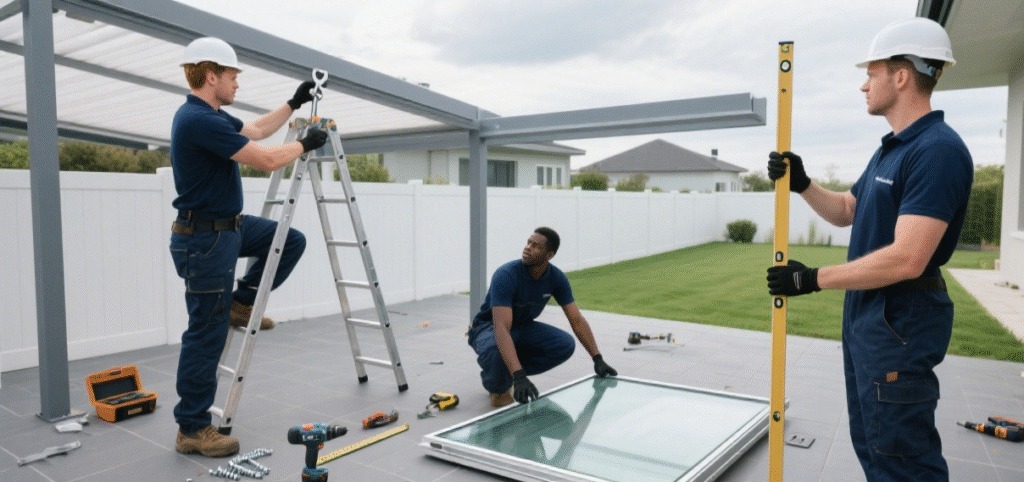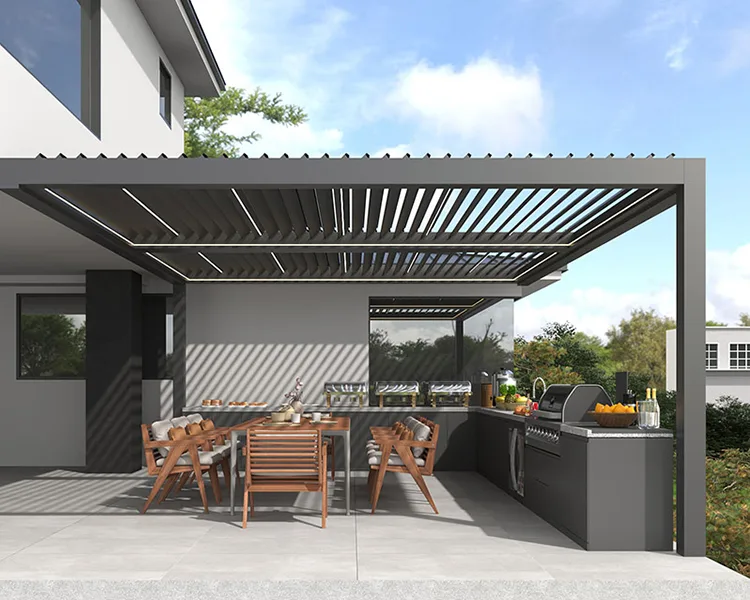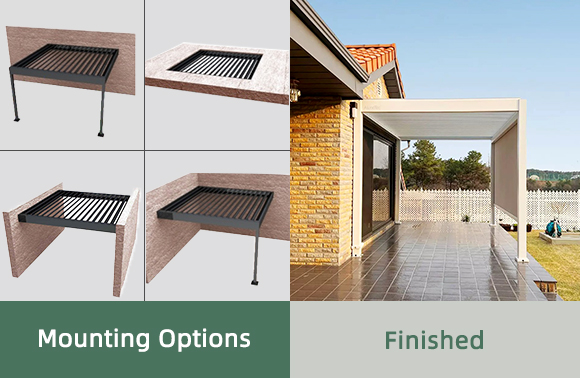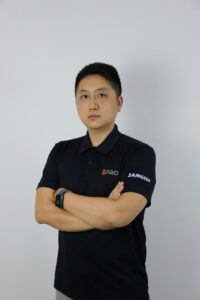🏡 How to Choose the Right Pergola Installation Method?

If you have already chosen a pergola for your home, the next crucial step is installation. Different installation methods can not only change the overall layout of your outdoor space but may even affect your property’s value.
- Understanding the installation method is a key part of planning your overall project. For a complete overview, see our Ultimate Pergola Cost Guide to 2025.
As a Chinese pergola manufacturing factory serving customers worldwide for over 20 years, we have not only focused on pergola manufacturing and upgrading but also encountered various installation methods. Each has its own advantages and drawbacks.
In this article, we’ll look at the three most common pergola installation methods, their characteristics, and what you need to consider before choosing the right one for your yard.
Why Choosing the Right Pergola Installation Method is Crucial?
Before we compare the different types, it’s vital to understand why this decision carries so much weight. The right choice ensures:
Maximum Space Utilization:
You’ll select a design that complements your yard’s size and layout, making the most of every square foot
instead of creating an awkward obstruction.
Long-Term Structural Safety:
You’ll understand the structural demands each method places on your property, especially when attaching
a large structure directly to your home.
Seamless Architectural Harmony:
The pergola will look like a deliberate, integrated feature of your property, flowing naturally with your
home’s existing style.
Budget and Project Control:
Different methods have significant impacts on material costs, labor complexity, and the need for permits,
directly affecting your budget and timeline.
1️⃣ Freestanding Pergola (Four or More Posts)
A freestanding pergola is supported by four or more posts and is completely detached from any walls. It is one of the easiest ways to enhance your outdoor living area.
✨ Advantages of Freestanding Pergolas
- Independent structure: Does not rely on walls; becomes a landscape feature.
- Customizable aesthetics: Columns, colors, and textures can match your home or hotel style.
- Versatile functions: Sunshade, rainproof, plus optional curtains, lights, glass doors.
- Wide application: Gardens, poolside, villa courtyards, restaurant terraces.
- Durable strength: T6063+ aluminum alloy, powder coating, corrosion and wind resistant.
- Boosts property value: Directly increases resale appeal.
⚠️ Disadvantages of Freestanding Pergolas
- Large footprint: Requires more yard space.
- Higher cost: More materials, foundation, and smart features.
- Non-movable: Fixed structure, not suitable for relocation.
- Approval limits: Some commercial projects need municipal permits.

2️⃣ Attached Pergola (1–3 Posts)
An attached pergola is directly fixed to the exterior wall of a house, supported by one to three posts. It’s common at entrances and terraces, creating a seamless indoor-outdoor connection.
✨ Advantages of Attached Pergolas
- Space & cost saving: Uses fewer posts and materials, reducing price.
- Exceptional stability: House wall provides robust support, withstands strong winds and snow.
- Seamless extension: Extends living rooms or kitchens outdoors for dining/resting areas.
⚠️ Disadvantages of Attached Pergolas
- Location limits: Needs load-bearing wall; house structure defines pergola placement.
- Indoor lighting issues: May block sunlight through main room windows.
- Lower design flexibility: Height, slope, drainage, and style constrained by house.
- Complex installation: Requires professional builders; DIY not recommended.

3️⃣ Suspended Pergola (No Posts)
A suspended pergola removes all columns, relying on tensile force and structural engineering, creating a floating, modern aesthetic. Common in hotels and high-end spaces.
✨ Advantages of Suspended Pergolas
- Excellent openness: No posts; unobstructed movement and views.
- Unique aesthetics: Floating effect enhances modern architecture.
- Solves site challenges: Ideal for spaces unsuitable for traditional pergolas.
⚠️ Disadvantages of Suspended Pergolas
- Extremely high cost: Requires reinforced materials and structural engineering.
- Complex installation: Precision work by experienced engineers; DIY impossible.
- Size limits: Large spans raise cost and feasibility challenges.
📊 Key Differences at a Glance
| Type | Price | Installation |
|---|---|---|
| Freestanding Pergola | High (materials + foundation) | Modular, easier for DIY |
| Attached Pergola | More affordable | Complex, requires professional team |
| Suspended Pergola | Most expensive | Structural engineers required |
“For a detailed breakdown of foundation, labor, and permit fees, read our Complete Guide to Pergola Installation Costs.“
Beyond the Basics: 4 Key Considerations for Your Installation
Choosing a type is the first step. Here are four more crucial factors our experience has shown are vital for a successful project.
🏛️ 1. Foundations
No matter which pergola installation method you choose (besides hanging), its longevity depends on its foundation. For freestanding and attached pergolas, this means digging below the frost line and pouring concrete footings for each post. Using pre-cast concrete piers or setting post anchors directly into the wet concrete provides a stable, durable base that prevents shifting and sinking. Never simply place posts on top of the ground or a patio slab.
🧱 2. How Material Choice Impacts Installation
The material you choose—be it wood, vinyl, or aluminum—directly affects the installation process.
- Wood: Heavy and requires at least two people to lift beams. It needs to be sealed or stained before or immediately after installation to protect it.
- PVC: Lighter than wood but can be more complex, often involving a system of internal supports within the vinyl sleeves.
- Aluminum: Typically the lightest and most DIY-friendly. Modern aluminum pergolas often come in pre-fabricated kits with precision-drilled holes, simplifying assembly significantly.
📜 3. Navigating Building Permits and Local Codes
Before you buy materials or dig a single hole, check with your local municipal building department. Many areas require a permit for structures over a certain size or height. There may also be setback rules dictating how close the structure can be to your property line. A great starting point is the International Code Council (ICC) website, which provides general guidelines, but your local authority always has the final say.
🛠️ 4. DIY vs. Professional Help: A Realistic Assessment
Can you install a pergola yourself?
- DIY: If you are an experienced DIYer with the right tools (impact driver, level, miter saw, etc.) and at least one strong helper, installing a pergola kit—especially an aluminum one—is very achievable.
- Call a Pro: If you are considering an attached pergola (due to the risks of improper wall attachment), if your ground is severely sloped, or if you simply lack the time and tools, hiring a professional contractor is a wise investment in safety and quality.
Making Your Final Decision: 5 Questions to Ask Yourself
Now, it’s time to make your choice. Stand in your yard and answer these five questions honestly to find your perfect match.
- What is my primary goal? Am I creating a new destination in the garden (Freestanding), or am I extending my home’s living space (Attached)?
- What does my space realistically allow? Do I have the large, open area a Freestanding pergola needs, or would an Attached or Hanging model make better use of a smaller patio?
- How strong is my house? Is my exterior wall made of brick, concrete, or does it have accessible, strong framing studs suitable for an Attached or Hanging pergola?
- What is my true budget? Have I factored in the cost of concrete, hardware, and potential tool rentals or professional labor on top of the pergola kit itself?
- What is my skill and comfort level? Am I confident in my ability to create perfectly square foundations and safely attach a heavy structure to my home?
✅ Summary & Recommendation
Each pergola installation method suits different needs:
- Freestanding Pergolas: Flexible, customizable, best for large yards & high budgets.
- Attached Pergolas: Space-efficient, economical, ideal for small homes.
- Suspended Pergolas: Modern, luxurious, high cost & complexity, best for commercial or high-end residences.
3,If design impact and uniqueness are your top priorities, and budget allows, suspended pergolas are unmatched.



